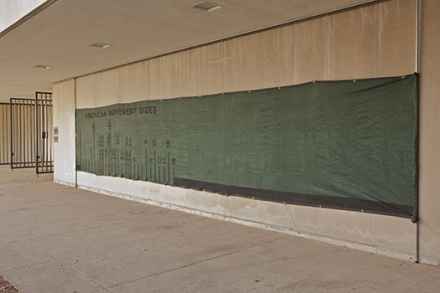Valerie Snobeck, MFA’08, Creates Piece for Smart Museum Courtyard
Valerie Snobeck, MFA'08, has created a piece titled American Standard Movement as part of the annual Threshold series sponsored by the Smart Museum of Art. The site-specific work, presented in the Vera and A.D. Elden Sculpture Garden, re-uses debris netting that was previously part of a construction project on the University of Chicago campus in order to open up questions about environment, the passage of time, and progress.

